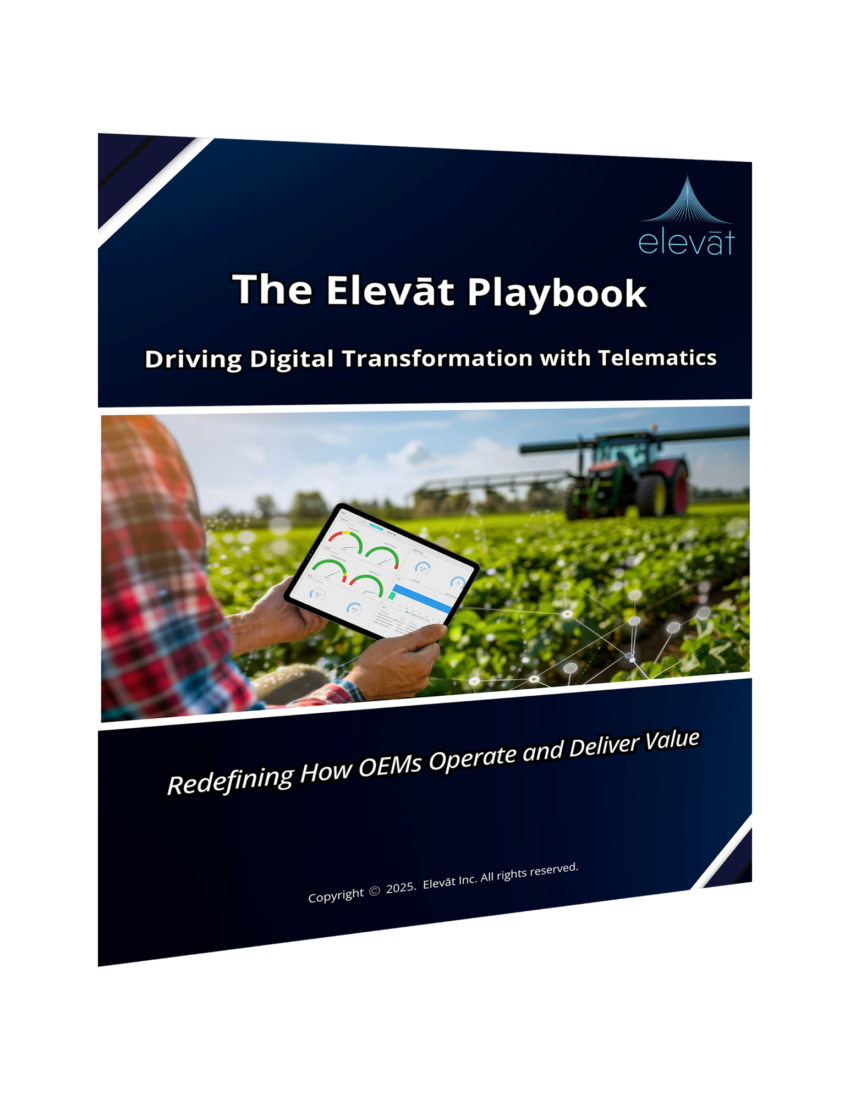Resources and News
Read the latest news about Elevāt’s partnerships and innovation as well as blog posts with our take on the latest technology, trends and policies in the mobile and off-highway industry space.
Elevāt In the News
NewsAugust 13, 2024
Elevāt and Microsoft Partner to ‘Revolutionize’ IoT within Heavy Machinery Industries
Elevāt has announced a technical partnership with Microsoft.
NewsAugust 5, 2024
Elevāt and Cummins Collaborate to Deliver Next Generation IoT-Connected Services
Elevāt has partnered with Cummins Inc. (NYSE: CMI) to integrate Cummins...
Upcoming Events
All Resources
White PapersAugust 13, 2024
Company Overview Brochure
Learn how we connect entire ecosystems, deliver real-time insights, and optimize machinery performance.
Case StudiesAugust 20, 2024
Case Study: Agriculture
Agriculture and Elevāt: Intelligent farming for higher yields.
Case StudiesAugust 20, 2024
Case Study: Construction
Enabling reliable equipment for advanced construction.
Case StudiesAugust 20, 2024
Case Study: Enterprise Solutions
See the ROI of connected machines with enterprise IoT for OEMs.
Use CasesSeptember 24, 2024
Use Case: Maintenance
Proactive maintenance powered by data-driven insights.
Use CasesSeptember 24, 2024
Use Case: Warranty
Centralized access to machine information for warranty validation and management.
Use CasesSeptember 24, 2024
Use Case: Serviceability
Easily manage machine service needs through unified data access.
Case StudiesMay 30, 2025
Case Study: Utilization Trends
Discover how utilization insights led to better service planning and reduced downtime.
Case StudiesMay 30, 2025
Case Study: Elevāt IoT and Parker Hannifin Collaboration on IQAN Connect
Discover how Elevāt + Parker Hannifin improved remote support for OEMs through the launch of IQAN Connect.
Case StudiesMay 30, 2025
Case Study: The Platform Behind IQAN Connect Continues
See how Elevāt drives the evolution of IQAN Connect with a platform built for what’s next.
The Elevāt Playbook
Elevāt’s Playbook provides insight into the challenges of implementing and scaling IoT solutions—and how we help OEMs navigate them.

See Our Solutions in Action
Let us know your specific needs and we’ll schedule time to demonstrate how Elevāt can
jumpstart your IoT journey.